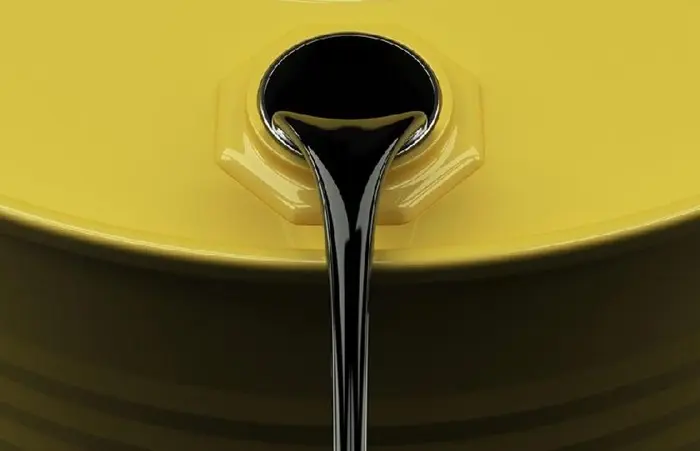Crude oil, commonly known as petroleum, is a vital energy resource that powers the modern world. Understanding the origins of crude oil requires an exploration of the biomes that contribute to its formation. This article will delve into the types of biomes involved in the creation of crude oil, the processes that lead to its formation, and the significance of this resource in today’s economy.
1. Introduction to Crude Oil
Crude oil is a natural, unrefined petroleum product composed of hydrocarbon deposits and other organic materials. It is extracted from the ground and refined into various products, including gasoline, diesel, and jet fuel. The formation of crude oil is a complex geological process that takes millions of years.
1.1 Importance of Crude Oil
Crude oil is one of the world’s most important resources. It fuels transportation, powers industries, and is used in the production of chemicals and plastics. Understanding how crude oil is formed helps us comprehend its value and the ecological implications of its extraction.
2. Understanding Biomes
Biomes are large ecological areas on the Earth’s surface, with specific climates, plants, and animals. Each biome is characterized by its temperature, precipitation, and types of vegetation. The key biomes relevant to the formation of crude oil are primarily marine biomes, though some terrestrial biomes contribute as well.
2.1 Types of Biomes
The following sections will detail the main biomes that contribute to crude oil formation.
3. Marine Biomes
3.1 Oceanic and Coastal Zones
The majority of crude oil originates from marine biomes, particularly oceanic zones. These areas are rich in microscopic organisms, such as phytoplankton and zooplankton, which serve as the primary source of organic matter.
3.1.1 Phytoplankton
Phytoplankton are microscopic plants that inhabit the upper layers of the ocean. They perform photosynthesis, using sunlight to convert carbon dioxide and nutrients into organic matter. When these organisms die, they sink to the ocean floor, contributing to sediment layers.
3.1.2 Zooplankton
Zooplankton are small animals that feed on phytoplankton. They also contribute to the organic matter that accumulates on the ocean floor. The combination of phytoplankton and zooplankton forms a substantial organic layer, which is essential for crude oil formation.
3.2 Sedimentary Basins
Sedimentary basins are geographical areas where sediments accumulate over time. These basins are often found in continental shelves and deep-sea environments.
3.2.1 Formation of Sediments
Over millions of years, layers of sediment build up over organic matter. This process occurs in areas where the rate of sedimentation exceeds the rate of decomposition. The weight of these sediments compresses the organic matter, initiating the transformation into hydrocarbons.
3.2.2 Types of Sedimentary Rocks
The primary types of sedimentary rocks involved in oil formation include shale, sandstone, and limestone. Shale is particularly significant as it often contains a high concentration of organic material.
4. Terrestrial Biomes
While marine biomes play a crucial role in the formation of crude oil, certain terrestrial biomes also contribute to the process.
4.1 Swamps and Marshes
Swamps and marshes are wetlands that provide ideal conditions for the accumulation of organic matter. These biomes support a diverse range of plant life, including algae, reeds, and trees.
4.1.1 Decomposition of Organic Material
In swampy environments, dead plant material accumulates and becomes buried under layers of sediment. Anaerobic conditions in these wetlands slow down decomposition, allowing for the preservation of organic material.
4.1.2 Contribution to Oil Formation
Over time, the preserved organic material can transform into kerogen, a precursor to crude oil. When subjected to heat and pressure, kerogen breaks down into hydrocarbons, contributing to oil deposits.
4.2 Forest Biomes
Forests, particularly those that have experienced flooding, can also contribute to crude oil formation. Fallen trees and other organic debris accumulate in sediment-rich environments.
4.2.1 Organic Accumulation
As with swamps, the accumulation of organic material in forested areas creates conditions conducive to oil formation. The high humidity and temperature in tropical forests enhance the decomposition process, leading to the formation of hydrocarbons over geological time scales.
4.2.2 Geological Conditions
The burial of organic matter under sediment layers in forested biomes is essential for the creation of oil reserves. The heat and pressure from overlying sediments initiate the chemical transformations necessary for oil formation.
See Also: What Are Crude Oil Futures?
5. The Process of Crude Oil Formation
The formation of crude oil involves several geological and chemical processes that occur over millions of years.
5.1 Diagenesis
Diagenesis is the initial stage of sediment compaction and transformation. During this phase, organic matter undergoes physical and chemical changes, resulting in the formation of kerogen.
5.2 Catagenesis
Catagenesis occurs when kerogen is subjected to increased heat and pressure over time. This process breaks down kerogen into liquid and gaseous hydrocarbons, forming crude oil and natural gas.
5.3 Metagenesis
Metagenesis is the final stage of hydrocarbon formation. At this stage, hydrocarbons may further break down into lighter hydrocarbons or solid residues, such as graphite. However, most commercially viable oil is formed during catagenesis.
6. The Role of Geological Time
The formation of crude oil is a long-term process, taking millions of years. Geological factors, such as tectonic activity and sedimentation rates, play a crucial role in determining the availability of oil reserves.
6.1 Tectonic Activity
Tectonic movements can create traps that hold oil deposits. These geological structures can include anticlines, fault traps, and salt domes. The configuration of these structures can influence the concentration and accessibility of oil reserves.
6.2 Sedimentation Rates
The rate of sedimentation is critical for the preservation of organic material. High sedimentation rates contribute to the accumulation of organic matter, while low rates may lead to the decomposition of organic material before it can transform into hydrocarbons.
7. Conclusion
Crude oil is a vital resource formed primarily from organic matter in marine biomes, particularly in sedimentary basins rich in phytoplankton and zooplankton. Terrestrial biomes, such as swamps and forests, also contribute to the formation of crude oil through the accumulation of organic material.
Understanding the types of biomes that contribute to crude oil formation is essential for appreciating the complexities of this natural resource. As society continues to rely on petroleum, understanding its origins can lead to more informed decisions regarding its use and the environmental impacts of extraction.
As we move towards a more sustainable future, it is crucial to consider alternative energy sources while acknowledging the significant role crude oil has played in the development of modern civilization. By understanding the biomes and geological processes involved in crude oil formation, we can better appreciate this vital resource and its impact on our world.
Related topics:

































